Related Research Articles

Howard Robert Horvitz ForMemRS NAS AAA&S APS NAM is an American biologist best known for his research on the nematode worm Caenorhabditis elegans, for which he was awarded the 2002 Nobel Prize in Physiology or Medicine, together with Sydney Brenner and John E. Sulston, whose "seminal discoveries concerning the genetic regulation of organ development and programmed cell death" were "important for medical research and have shed new light on the pathogenesis of many diseases".
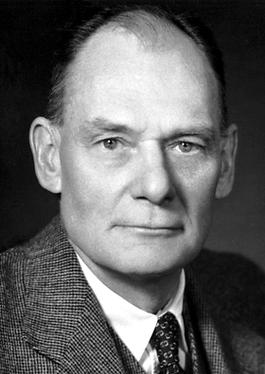
John Franklin Enders was an American biomedical scientist and Nobel Laureate. Enders has been called "The Father of Modern Vaccines."
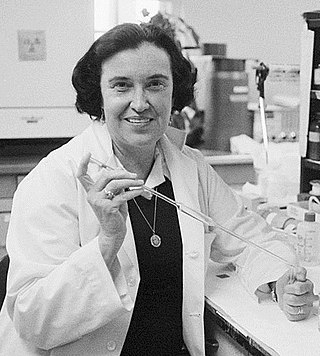
Rosalyn Sussman Yalow was an American medical physicist, and a co-winner of the 1977 Nobel Prize in Physiology or Medicine for development of the radioimmunoassay technique. She was the second woman, and the first American-born woman, to be awarded the Nobel Prize in Physiology or Medicine.
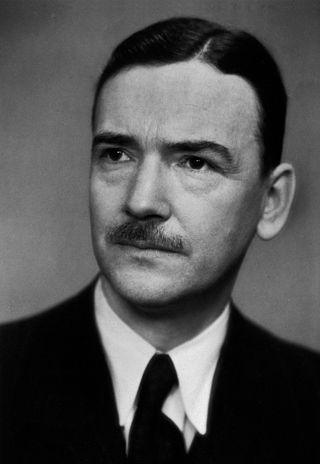
Ulf Svante von Euler was a Swedish physiologist and pharmacologist. He shared the Nobel Prize in Physiology or Medicine in 1970 for his work on neurotransmitters.

The University of Bern is a public research university in the Swiss capital of Bern. It was founded in 1834. It is regulated and financed by the Canton of Bern. It is a comprehensive university offering a broad choice of courses and programs in eight faculties and some 150 institutes. With around 19,000 students, the University of Bern is the third largest university in Switzerland.
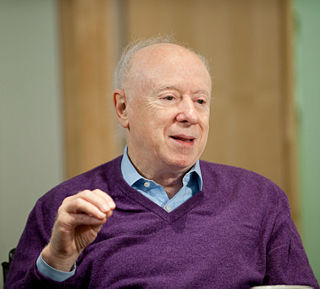
Joseph Leonard Goldstein ForMemRS is an American biochemist. He received the Nobel Prize in Physiology or Medicine in 1985, along with fellow University of Texas Southwestern researcher, Michael Brown, for their studies regarding cholesterol. They discovered that human cells have low-density lipoprotein (LDL) receptors that remove cholesterol from the blood and that when LDL receptors are not present in sufficient numbers, individuals develop hypercholesterolemia and become at risk for cholesterol related diseases, notably coronary heart disease. Their studies led to the development of statin drugs.

Oliver Smithies was a British-American geneticist and physical biochemist. He is known for introducing starch as a medium for gel electrophoresis in 1955, and for the discovery, simultaneously with Mario Capecchi and Martin Evans, of the technique of homologous recombination of transgenic DNA with genomic DNA, a much more reliable method of altering animal genomes than previously used, and the technique behind gene targeting and knockout mice. He received the Nobel Prize in Physiology or Medicine in 2007 for his genetics work.
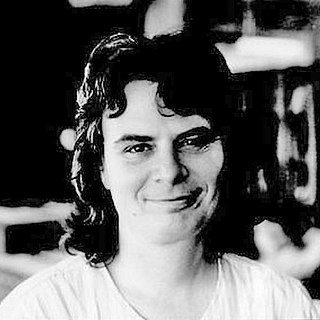
Karen Keskulla Uhlenbeck ForMemRS is an American mathematician and one of the founders of modern geometric analysis. She is a professor emeritus of mathematics at the University of Texas at Austin, where she held the Sid W. Richardson Foundation Regents Chair. She is currently a distinguished visiting professor at the Institute for Advanced Study and a visiting senior research scholar at Princeton University.

Richard Henderson is a British molecular biologist and biophysicist and pioneer in the field of electron microscopy of biological molecules. Henderson shared the Nobel Prize in Chemistry in 2017 with Jacques Dubochet and Joachim Frank.„Thanks to his work, we can look at individual atoms of living nature, thanks to cryo-electron microscopes we can see details without destroying samples, and for this he won the Nobel Prize in Chemistry."
This article discusses women who have made an important contribution to the field of physics.
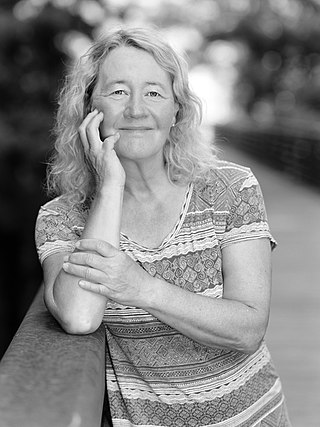
Carolyn Widney Greider is an American molecular biologist and Nobel laureate. She joined the University of California, Santa Cruz as a Distinguished Professor in the department of molecular, cell, and developmental biology in October 2020.

Carolyn Ruth Bertozzi is an American chemist and Nobel laureate, known for her wide-ranging work spanning both chemistry and biology. She coined the term "bioorthogonal chemistry" for chemical reactions compatible with living systems. Her recent efforts include synthesis of chemical tools to study cell surface sugars called glycans and how they affect diseases such as cancer, inflammation, and viral infections like COVID-19. At Stanford University, she holds the Anne T. and Robert M. Bass Professorship in the School of Humanities and Sciences. Bertozzi is also an Investigator at the Howard Hughes Medical Institute (HHMI) and is the former director of the Molecular Foundry, a nanoscience research center at Lawrence Berkeley National Laboratory.

Sir David William Cross MacMillan is a Scottish chemist and the James S. McDonnell Distinguished University Professor of Chemistry at Princeton University, where he was also the chair of the Department of Chemistry from 2010 to 2015. He shared the 2021 Nobel Prize in Chemistry with Benjamin List "for the development of asymmetric organocatalysis". MacMillan used his share of the $1.14 million prize to establish the May and Billy MacMillan Foundation.

Jack William Szostak is a Canadian American biologist of Polish British descent, Nobel Prize laureate, University Professor at the University of Chicago, former Professor of Genetics at Harvard Medical School, and Alexander Rich Distinguished Investigator at Massachusetts General Hospital, Boston. Szostak has made significant contributions to the field of genetics. His achievement helped scientists to map the location of genes in mammals and to develop techniques for manipulating genes. His research findings in this area are also instrumental to the Human Genome Project. He was awarded the 2009 Nobel Prize for Physiology or Medicine, along with Elizabeth Blackburn and Carol W. Greider, for the discovery of how chromosomes are protected by telomeres.
The International Human Frontier Science Program Organization (HFSPO) is a non-profit organization, based in Strasbourg, France, that funds basic research in life sciences. The organization implements the Human Frontier Science Program (HFSP) and is supported by 14 countries and the European Commission. Shigekazu Nagata is the HFSPO President and Chair of the Board of Trustees since 2018.
Jorge Enrique Galán is an Argentinian-American microbiologist who specializes in infectious disease, bacterial pathogenesis including Salmonella.

John O'Keefe, is an American-British neuroscientist, psychologist and a professor at the Sainsbury Wellcome Centre for Neural Circuits and Behaviour and the Research Department of Cell and Developmental Biology at University College London. He discovered place cells in the hippocampus, and that they show a specific kind of temporal coding in the form of theta phase precession. He shared the Nobel Prize in Physiology or Medicine in 2014, together with May-Britt Moser and Edvard Moser; he has received several other awards. He has worked at University College London for his entire career, but also held a part-time chair at the Norwegian University of Science and Technology at the behest of his Norwegian collaborators, the Mosers.
Jennifer "Jenni" A. Garden is a UKRI Future Leaders Fellow in the Department of Chemistry at the University of Edinburgh, where she leads a research group investigating how catalyst design and organometallic chemistry can be used to develop sustainable and degradable plastics using renewable sources.
References
- ↑ "History". The Hans Sigrist Foundation. 2015-06-09. Retrieved 2020-09-02.
- ↑ "Aaron Roth: Pioneer of fair algorithms |". www.uniaktuell.unibe.ch. Retrieved 2023-11-25.
- ↑ "Pioneering biologist wins Prize for mother and baby research that aims to improve life-long health and wellbeing | StJohns". www.joh.cam.ac.uk. Retrieved 2021-02-27.
- ↑ "Hans Sigrist Prize Winners". The Hans Sigrist Foundation. 2019-04-03. Retrieved 2021-02-27.
- ↑ "Exoplanet researcher awarded for groundbreaking work". ZME Science. 2019-12-07. Retrieved 2020-09-02.
- ↑ "Ignas Snellen", Wikipedia (in Dutch), 2018-02-21, retrieved 2020-09-04
- ↑ Beaver, Annabelle; Proudfoot, Kathryn L.; von Keyserlingk, Marina A.G. (2020-06-01). "Symposium review: Considerations for the future of dairy cattle housing: An animal welfare perspective". Journal of Dairy Science. 103 (6): 5746–5758. doi: 10.3168/jds.2019-17804 . ISSN 0022-0302. PMID 32147258.
- ↑ "Hans Sigrist Prize for Professor Heleen Murre-van den Berg". Deutsch | Studieren in Nimwegen (in German). Retrieved 2020-09-02.
- ↑ "Prof Gabriele Hegerl Wins 2016 Hans Sigrist Prize | School of GeoSciences". www.geos.ed.ac.uk. Retrieved 2020-09-02.
- ↑ "Luciano Marraffini". Our Scientists. Retrieved 2020-09-02.
- ↑ "Historian Jennifer Klein wins Hans Sigrist Prize". Yale School of Management. 2014-12-11. Retrieved 2020-09-02.
- ↑ "Stephen Boppart wins Hans Sigrist Prize". spie.org. Retrieved 2020-09-02.
- ↑ "Trustee: Professor Nicola Lacey FBA CBE". The British Museum. Retrieved 2020-09-02.
- ↑ "International Review of Administrative Services". doi: 10.1177/0020852318792769 . S2CID 158682435.
{{cite journal}}: Cite journal requires|journal=(help) - ↑ Sigrist, Hans; Zahler, Peter (1978). "Characterization of phenylisothiocyanate as a hydrophobic membrane label". FEBS Letters. 95 (1): 116–120. doi: 10.1016/0014-5793(78)80064-7 . PMID 720590. S2CID 46601243.
- ↑ "Community Conversation with Elsa Tamez".